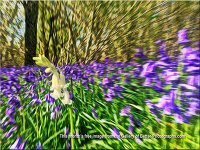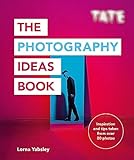

Using a New Camera
|
 |
There
it sits, one of the first gifts under the tree, all gift wrapped and
tempting - camera, instructions and all. Enter the internet. Most manufacturers publish the instructions for their cameras on their websites these days, so there is an opportunity to prepare for your new camera before opening the box. Every camera I have used in the last few years has included functions that I didn't even know about. |
When I read a user manual I cannot and do not even try to remember how to operate all these functions but at least I know what the camera is capable of, as and when the opportunity for experimentation arises.
What I do try to remember (and practice with my eyes closed until it is automatic) is where all the basic controls are and which way to turn or press them. Many a shot has been missed because the photographer was fumbling with the controls.
So much for preparing for the new camera. How can you prepare yourself to take better photographs?
This may sound obvious but studying photographs and paintings is not just enjoyable, it helps you to SEE better. It also helps you to determine what type of photographer you want to become.
When studying photographs, which appeal most? - Dramatic Landscapes, Wildlife, People, Sports … Very often we are drawn towards pictures of activities we already enjoy but it is often the case that photography introduces us to activities in which we had never thought to participate.
When assessing a picture, try to notice four of its attributes -
Composition - what's in the picture, where things are positioned and, equally important, what's left out.
Lighting - it's direction, colour and intensity.
Exposure - how light or dark the picture is overall.
Focus - which parts are sharp and which are blurred.
These points are covered in more detail in the "Photography Technique" article but for now it will help you to be aware of them. They form the basis of taking better photographs.
When viewing photographs in a gallery or a publication, it is worth recognising that for every image displayed there are many that have been discarded by the photographer - even the professionals. The digital era is the main cause of this as hundreds of photos can be taken with one memory card.
If you enjoy spending hours reviewing your shots and deleting them either on the computer or the camera screen then you will welcome this - by the way, deleting images in the camera is one of the quickest ways of draining its battery.
My personal preference is to spend as much time as possible taking photos and to minimise the time spent at the computer. The days of using film helped with this discipline - only 36 photos per film and each one costing quite a lot given the price of film, developing and printing.
Unless I'm photographing an action scene which is unlikely to be repeated such as children at play, sport or wildlife, I find that taking my time to get everything "just right" in the camera before taking the shot saves a great deal of time at the computer.
I still delete shots but I find it helps to file the "keeps" into three categories -
1 - Destined for the Scrapbook or Social Internet sites such as Facebook. These tend to be the event shots which will have personal appeal to family and friends.
2 - To be displayed in an album or used in a slideshow. A selection which communicates the feeling of a place, event or subject without duplication and which is sensitive to the viewers' time and interest.
3 - To be printed and framed or placed in a showcase gallery. Less than one in a hundred are good enough even to be considered for this category. One of the greatest and most respected photographers of all time - Ansel Adams - said that he was doing well if he kept more than 12 of his photographs … in a year.
That said - the first step towards better photographs is taking photographs - maybe on that outing to walk off the Sunday lunch. Try to avoid saying "I wish I'd brought my camera!".
I hope that bearing these thoughts in mind will help you to enjoy photography as much as I do. Few of us aspire to be a top professional, we just want to enjoy recording life as we see it and to share our experiences with others and perhaps, to enter one of the many competitions.
If you have unanswered questions about your next new camera - please ask them in the comment section below or contact me.
 |
| Image of the Month |
 |
| Click here to download it. |
| Find It |

Custom Search
|
| All of the advice, tutorials, masterclasses and ideas on this website are available to you at no charge. Even so, its upkeep does incur costs. |
|
| If you feel that
the site has helped you then any contribution you make, however small,
would go towards its ongoing maintenance and development. Thanks for your help. |
| Book of the Month |
 |
| Click here to read the review. |
|
|

New! Comments
Have your say about what you just read! Leave me a comment in the box below.